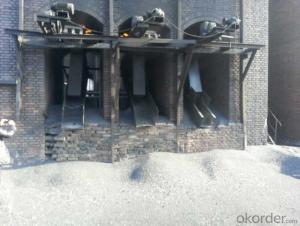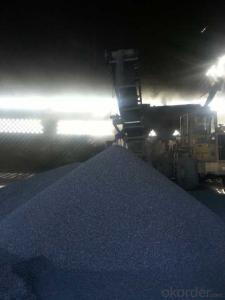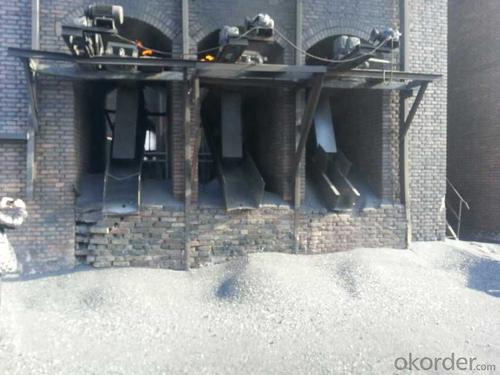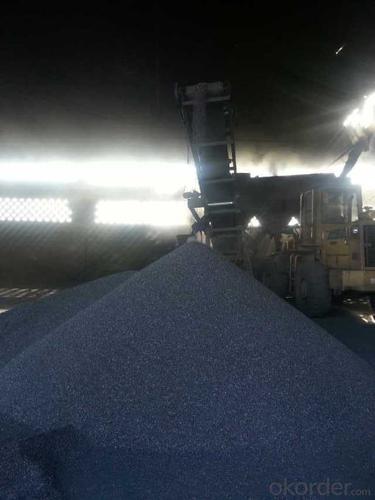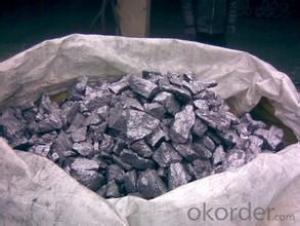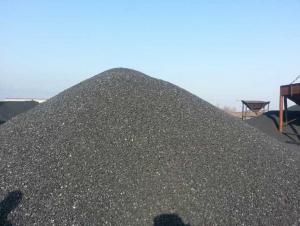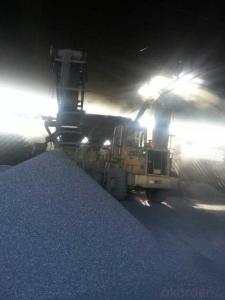Calcined Anthracite Coal with Carbon FC82-90%
- Loading Port:
- Tianjin
- Payment Terms:
- TT OR LC
- Min Order Qty:
- 20 m.t.
- Supply Capability:
- 5000 m.t./month
OKorder Service Pledge
OKorder Financial Service
You Might Also Like
Packaging & Delivery
Calcined Anthracite Coal with Carbon FC82-90%
25kgs/50kgs/1ton per bag or as buyer's request
Specifications
Calcined Anthracite Coal with Carbon FC82-90%
Fixed carbon: 90%-95%
S: 0.5% max
Size: 0-3. 3-5.3-15 or as request
Advantage:
Calcined Anthracite Coal with Carbon FC82-90%
1. strong supply capability
2. fast transportation
3. lower and reasonable price for your reference
4.low sulphur, low ash
5.fixed carbon:95% -90%
6..sulphur:lower than 0.3%
General Feature:
Calcined Anthracite Coal with Carbon FC82-90%
| FC | 90 | 88 | 85 | 83 | 82 |
| ASH | 8.5 | 10 | 12 | 14 | 15 |
| V.M. | 1.5 | 2 | 3 | 3 | 3 |
| S | 0.35 | 0.5 | 0.5 | 0.5 | 0.5 |
| MOISTURE | 0.5 | 1 | 1 | 1 | 1 |
Pictures
Calcined Anthracite Coal with Carbon FC82-90%
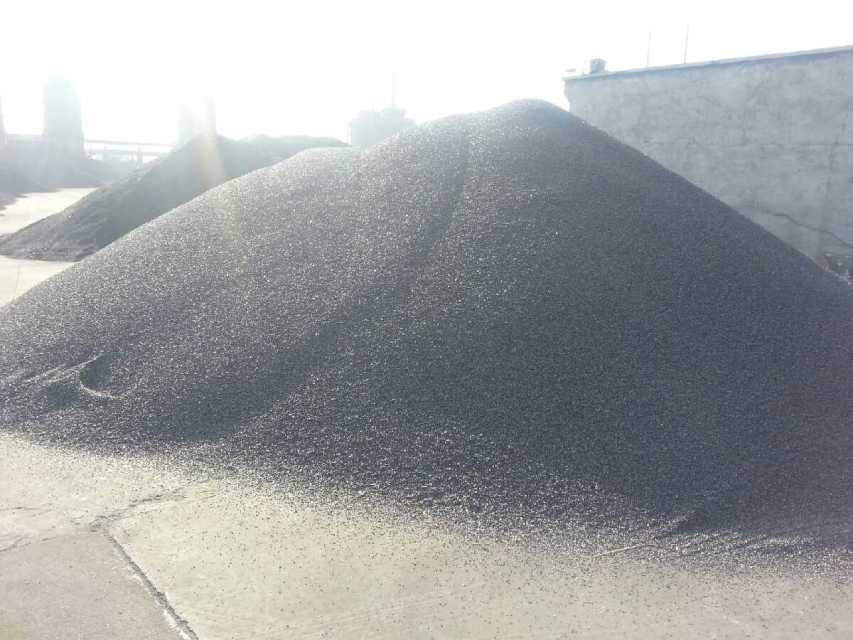
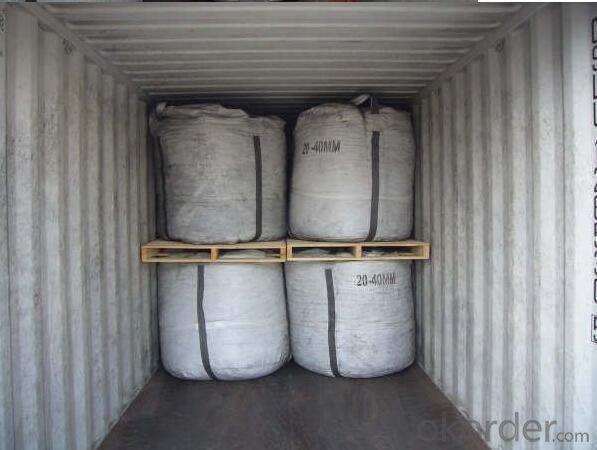

FAQ:
Calcined Anthracite Coal with Carbon FC82-90%
What can we do?
1.High quality and competitive price.
2.Timely delivery.
3.If any item you like. Please contact us.
Your sincere inquiries are typically answered within 24 hours.
- Q: What is the carbon emission of the air conditioner?
- Air conditioner using electric energy, itself is not the direct carbon emissions, but due to power consumption, power is not the primary energy, is two times the energy, so the power will come from where it is not decided or no pollution low and zero carbon emissions.Like water power, wind energy and solar energy, clean energy generates electricity without carbon emissions. It is pollution-free and zero carbon emissions. The use of coal raw materials power generation plants have carbon emissions, so air-conditioning carbon emissions is not easy to say, it depends on the specific circumstances analysis and decision.
- Q: What are the basic structures of iron carbon alloys?
- Ferrite: a solid solution in which carbon is dissolved in alpha -Fe, called ferrite. The symbol is Fe. Ferritic carbon content is very low, at 727 degrees of 0.0008%, and its mechanical properties similar to pure iron, strength and hardness is not high, plasticity and toughness good.Austenite: a solid solution in which carbon is dissolved in gamma -Fe, called austenite.
- Q: How does carbon affect the ozone layer?
- Carbon does not directly affect the ozone layer. However, certain carbon compounds, such as chlorofluorocarbons (CFCs) and hydrochlorofluorocarbons (HCFCs), can indirectly contribute to the depletion of the ozone layer. These compounds contain chlorine and bromine atoms, which are released into the atmosphere when the compounds are broken down by sunlight. Once in the atmosphere, chlorine and bromine atoms can catalytically destroy ozone molecules, leading to a thinning of the ozone layer. When a chlorine or bromine atom comes into contact with an ozone molecule, it reacts with it, breaking it apart and forming a chlorine or bromine oxide molecule and a regular oxygen molecule. The chlorine or bromine oxide molecule can then react with another ozone molecule, continuing the cycle and depleting the ozone layer. While carbon itself does not directly contribute to ozone depletion, the production and release of carbon compounds like CFCs and HCFCs result from human activities. These compounds were widely used in various industries, such as refrigeration, air conditioning, and aerosol propellants, until it was discovered that they were harmful to the ozone layer. The Montreal Protocol, an international treaty signed in 1987, aimed to phase out the production and use of these ozone-depleting substances. Reducing carbon emissions, however, is crucial in addressing another environmental concern – climate change. High levels of carbon dioxide and other greenhouse gases in the atmosphere trap heat, leading to global warming. This poses various threats to ecosystems and human societies. By transitioning to cleaner and more sustainable energy sources and implementing measures to reduce carbon emissions, we can tackle both ozone depletion and climate change, safeguarding the health of our planet.
- Q: What is carbon footprint labeling?
- Carbon footprint labeling is a system that provides information about the carbon emissions associated with a product or service. It aims to educate consumers about the environmental impact of their purchases and enable them to make more sustainable choices. The labeling typically includes a measure of the greenhouse gas emissions produced during the entire life cycle of a product, including its production, transportation, and disposal. This allows consumers to compare the carbon footprints of different products and make informed decisions based on their environmental values. Carbon footprint labeling is an important tool in promoting sustainability and encouraging businesses to reduce their emissions. It also raises awareness about the impact of individual consumption choices on climate change and encourages a shift towards more environmentally friendly alternatives.
- Q: 14 is the upper left corner of the mark, please answer a bit more detailed, thank you!
- Enter 14C, select "14", "point font" or "tool" button "superscript"".
- Q: How does carbon affect air quality?
- Carbon is a major contributor to air pollution as it combines with oxygen to form carbon dioxide (CO2), a greenhouse gas responsible for climate change. Additionally, carbon-based pollutants, such as carbon monoxide (CO) and volatile organic compounds (VOCs), can be released from the combustion of fossil fuels and contribute to poor air quality and negative health effects.
- Q: What is carbon offsetting in the hospitality industry?
- Carbon offsetting in the hospitality industry refers to the practice of counterbalancing the greenhouse gas emissions produced by hotels, resorts, and other hospitality businesses. It is a way to compensate for the carbon footprint created by various activities within the industry, such as energy consumption, transportation, waste management, and water usage. The process of carbon offsetting involves calculating the amount of carbon dioxide or other greenhouse gases emitted by a hospitality establishment and then investing in projects that reduce emissions elsewhere. These projects can include renewable energy initiatives, reforestation efforts, or energy efficiency programs. By supporting such projects, the hospitality industry aims to neutralize or offset its own carbon emissions, effectively reducing its impact on climate change. Hotels and resorts can choose to purchase carbon offsets from specialized organizations that facilitate carbon offset projects. These organizations ensure that the offsets are verified and comply with recognized standards, such as the Verified Carbon Standard or the Gold Standard. By investing in verified offsets, the hospitality industry can have confidence that their contributions are making a real and measurable difference in reducing global greenhouse gas emissions. Carbon offsetting in the hospitality industry is not only a way to demonstrate environmental responsibility, but it can also have economic benefits. Many travelers are becoming increasingly conscious of the environmental impact of their accommodation choices and are actively seeking out hotels and resorts that prioritize sustainability. By implementing carbon offsetting programs, hospitality businesses can attract environmentally conscious guests and differentiate themselves in a competitive market. Furthermore, carbon offsetting is just one part of a broader sustainability strategy within the hospitality industry. Many hotels and resorts are also adopting energy-efficient practices, implementing waste reduction measures, and promoting water conservation. By combining these efforts with carbon offsetting initiatives, the hospitality industry can contribute to a more sustainable future while also improving their bottom line. In summary, carbon offsetting in the hospitality industry involves investing in projects that reduce greenhouse gas emissions to compensate for the carbon footprint created by hotels and resorts. It is a way to neutralize the environmental impact of the industry and demonstrate a commitment to sustainability. By implementing carbon offsetting programs, the hospitality industry can attract environmentally conscious guests, differentiate themselves in the market, and contribute to a more sustainable future.
- Q: How is carbon dioxide formed?
- Various natural and man-made processes contribute to the formation of carbon dioxide. Fossil fuel combustion, including the burning of coal, oil, and natural gas, is a primary source of carbon dioxide. When these fuels are burned for energy or transportation purposes, carbon from hydrocarbons combines with oxygen from the air, resulting in carbon dioxide formation. In addition, carbon dioxide is released through natural occurrences such as volcanic eruptions and respiration by living organisms. During volcanic eruptions, molten rock releases carbon dioxide gas, which is then released into the atmosphere. Similarly, living organisms, including humans, animals, and plants, produce carbon dioxide as a byproduct of respiration, where oxygen is taken in and carbon dioxide is expelled. Furthermore, deforestation and land-use changes play a role in carbon dioxide formation. Trees and plants absorb carbon dioxide through photosynthesis, but when forests are cleared, this natural carbon sink is lost, leading to an increase in atmospheric carbon dioxide levels. Moreover, industrial processes like cement production and chemical reactions in manufacturing also contribute to carbon dioxide release. These processes involve the breakdown or burning of carbon-containing compounds, resulting in the release of carbon dioxide as a waste product. Overall, carbon dioxide is formed through a combination of natural processes and human activities. However, the burning of fossil fuels remains the largest contributor to the heightened levels of carbon dioxide in the atmosphere.
- Q: How does carbon impact the global water cycle?
- Carbon plays a significant role in the global water cycle as it influences the temperature and precipitation patterns. Increased levels of carbon dioxide in the atmosphere, primarily due to human activities, contribute to global warming, leading to rising temperatures. These higher temperatures enhance evaporation rates, causing more water to evaporate from oceans, lakes, and other water bodies. This increased evaporation intensifies the water cycle, resulting in more frequent and intense rainfall events. Conversely, carbon emissions also contribute to climate change, which can lead to droughts in certain regions, disrupting the global water cycle and exacerbating water scarcity issues. Overall, carbon impacts the global water cycle by influencing temperature, precipitation patterns, and the occurrence of extreme weather events.
- Q: What are the main sources of carbon on Earth?
- The main sources of carbon on Earth are both natural and anthropogenic (caused by human activity). In terms of natural sources, carbon is present in the Earth's atmosphere in the form of carbon dioxide (CO2), which is released through natural processes such as volcanic eruptions, respiration by plants and animals, and the decay of organic matter. Carbon is also found in the Earth's lithosphere in the form of carbonate rocks, such as limestone and dolomite, which are formed from the shells and skeletons of marine organisms. Anthropogenic sources of carbon are primarily associated with the burning of fossil fuels, such as coal, oil, and natural gas, for energy production and transportation. When these fossil fuels are burned, carbon dioxide is released into the atmosphere, contributing to the greenhouse effect and climate change. Deforestation and land-use changes also release carbon stored in trees and vegetation into the atmosphere. Additionally, human activities like industrial processes, cement production, and waste management contribute to the emission of carbon dioxide and other greenhouse gases. These activities release carbon that has been locked away for millions of years, significantly altering the natural carbon cycle. Overall, while carbon is naturally present on Earth, human activities have significantly increased its release into the atmosphere, leading to concerns about climate change and the need for sustainable practices to reduce carbon emissions.
Send your message to us
Calcined Anthracite Coal with Carbon FC82-90%
- Loading Port:
- Tianjin
- Payment Terms:
- TT OR LC
- Min Order Qty:
- 20 m.t.
- Supply Capability:
- 5000 m.t./month
OKorder Service Pledge
OKorder Financial Service
Similar products
Hot products
Hot Searches
